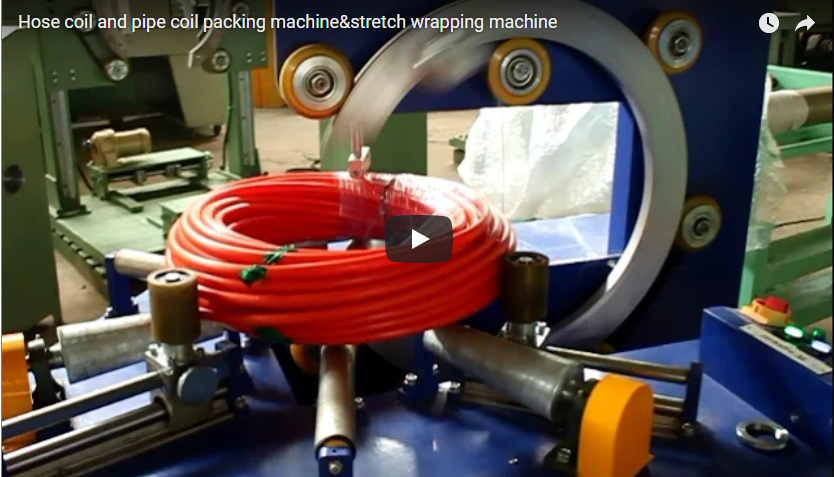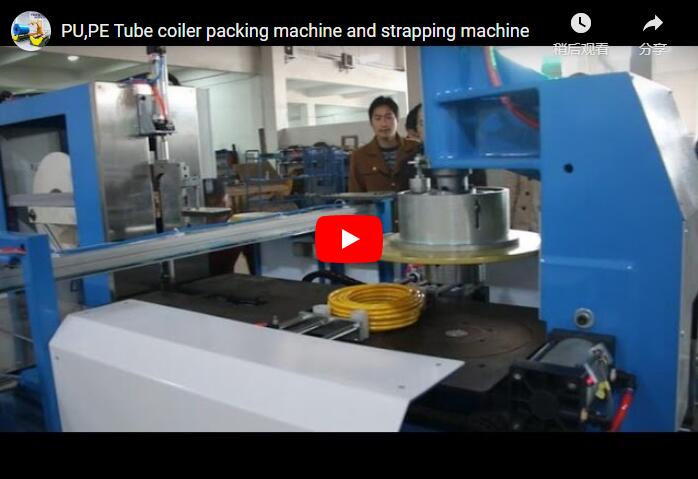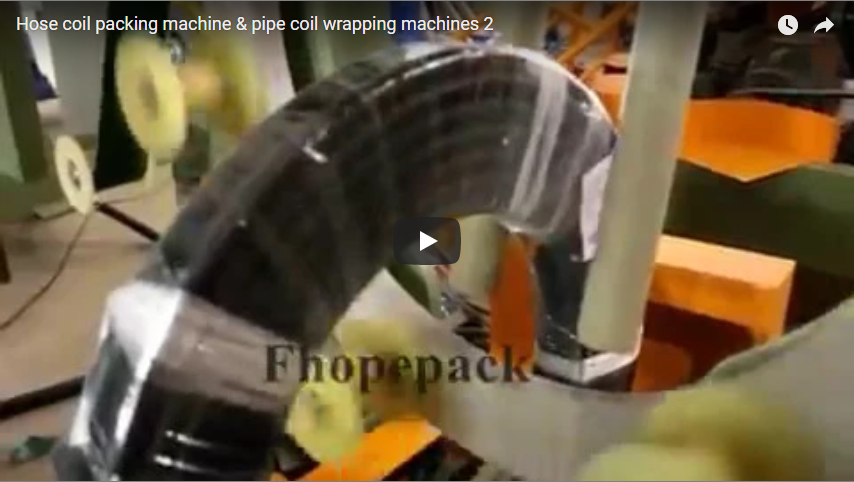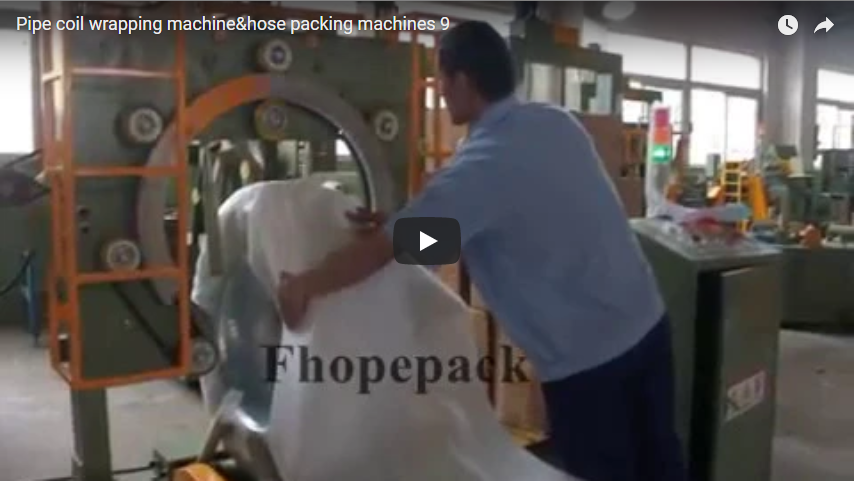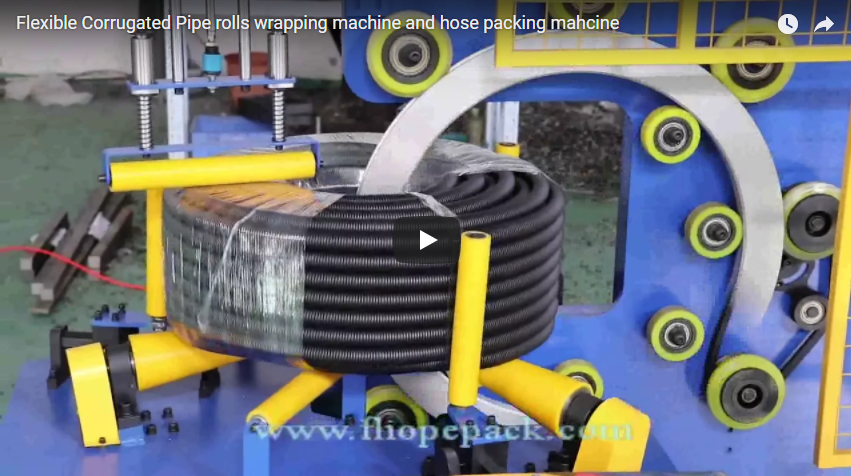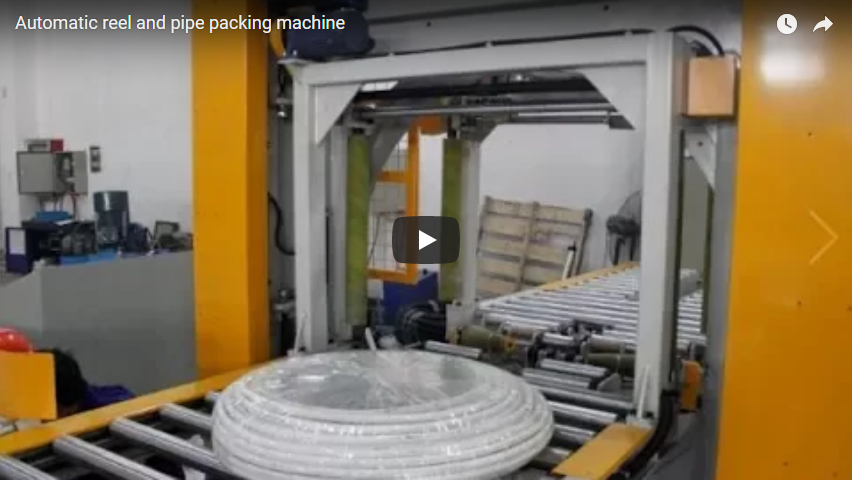Mastering Coil Protection: An In-Depth Look at Eye-Through Stretch Film Packing Technology
Industrial coils – encompassing materials like steel, aluminum, copper, and wire – represent significant investments and are foundational to numerous downstream industries. However, their cylindrical shape and often substantial weight make them inherently susceptible to damage, corrosion, and contamination during handling, storage, and transportation. Ensuring product integrity from the production line to the end-user necessitates robust and efficient packaging methodologies. The eye-through coil packing machine, utilizing stretch film technology, stands out as a sophisticated engineering solution designed to meet these critical demands.
The Engineering Behind Eye-Through Coil Wrapping
At the core of this automated packaging system lies the "eye-through" mechanism. Unlike traditional turntable or rotary arm wrappers, this design features a large annular ring, often referred to as the wrapping ring or shuttle. The coil is positioned, typically via automated conveyors or manual loading, such that its central axis aligns with the center of this ring.
The process unfolds as follows:
- Coil Positioning: The coil is securely placed or conveyed into the wrapping station.
- Film Application: A specialized film carriage, mounted on the rotating ring, holds the roll of stretch film. As the ring rotates around the stationary coil, the carriage simultaneously dispenses the film.
- Through-the-Eye Wrapping: The film is strategically guided through the center opening (the "eye") of the coil and around its outer circumference. This unique orbital wrapping pattern ensures complete encapsulation of the coil's surfaces – including the inner and outer diameters and the flat sides.
- Overlap Control: Advanced PLC (Programmable Logic Controller) systems precisely manage the ring's rotational speed and the coil's indexing (if applicable) to ensure consistent and adjustable film overlap, critical for achieving desired levels of protection and load stability.
- Film Securing: Upon cycle completion, automated systems typically clamp, cut, and seal the film tail, preparing the machine for the next coil with minimal operator intervention.
Technological Advancements and Efficiency Gains
Modern eye-through coil wrappers incorporate innovations drawn from materials science and automation engineering, reflecting advancements often detailed in packaging industry research and patent literature:
- Optimized Film Pre-Stretch: High-performance film carriages feature powered pre-stretch systems (often achieving ratios of 200-300% or more). This technology stretches the film before application, significantly increasing film yield (reducing material consumption per coil) and enhancing load containment force. Studies in packaging optimization frequently highlight pre-stretching as a key factor in reducing packaging costs and improving environmental footprint.
- Precision Tension Control: Maintaining consistent film tension is crucial. Sophisticated electronic tension control systems, sometimes employing feedback loops or proprietary algorithms (similar to concepts protected by patents like US Patent 5,687,541 concerning tension control in wrapping apparatus), adapt to the coil's geometry, ensuring a tight, secure wrap without damaging sensitive materials.
- Automation & Integration: These machines are designed for seamless integration into automated production lines. Capabilities include automatic coil recognition, programmable wrapping recipes for different product types, and communication with upstream and downstream conveyor systems, minimizing manual handling and boosting overall plant throughput. Research published in journals like Packaging Technology and Science often correlates automation levels with reduced packaging defects and improved operational efficiency.
- Enhanced Durability & Safety: Robust construction ensures reliability in demanding industrial environments. Safety features, including light curtains, safety interlocks, and guarding, comply with international safety standards, protecting operators and reducing workplace hazards.
Key Specifications & Capabilities
While specific configurations vary, typical parameters for industrial eye-through coil packing machines include:
- Machine Type: Automated Eye-Through Orbital Stretch Wrapper
- Year of Manufacture: (Example: 2023 - Specify actual)
- Condition: New / Refurbished
- Compatible Film: LLDPE Stretch Film (various thicknesses)
- Maximum Coil Weight Capacity: Commonly ranges from 1000kg to 5000kg+ (Example: 2000kg)
- Typical Packaging Speed: Variable, often 15-40 coils/hour depending on size and wrap requirements (Example: Up to 20 coils/hour)
- Coil Outer Diameter (OD) Range: Accommodates various sizes (e.g., 500mm - 2000mm)
- Coil Inner Diameter (ID) Range: Minimum ID dictated by ring size (e.g., 300mm - 800mm)
- Coil Width Range: Handles diverse widths (Example: 100mm to 1200mm)
- Control System: PLC with HMI (Human-Machine Interface)
- Power Requirements: (Example: 440V, 60Hz, 3-Phase - Specify actual)
- Approximate Machine Footprint: (Example: L: 3800mm; W: 3200mm; H: 1500mm - Specify actual)
- Approximate Machine Weight: (Example: 1800kg - Specify actual)
- Standard Warranty: (Example: 24 months - Specify actual)
Note: The parameters listed above are illustrative. For precise specifications matching the equipment shown in the video or tailored to your application, direct consultation is recommended.
Industry Applications: Addressing Specific Sector Needs
The versatility and protective capabilities of eye-through stretch wrappers make them invaluable across various metal and cable industries:
1. Steel Processing and Distribution
- Challenge: Heavy steel coils are highly susceptible to rust and surface damage during prolonged storage and multi-modal transport. Handling requires robust equipment.
- Solution: The machine provides a tight, multi-layered barrier against humidity, salt spray, and dust – critical for preventing corrosion. The secure wrap stabilizes coils (often weighing several tons) for safer handling via forklifts or cranes. Automation reduces manual labor in demanding environments. Ability to handle large widths (e.g., up to 1200mm) and weights (e.g., 2000kg) aligns with typical steel mill outputs.
2. Aluminum Production and Fabrication
- Challenge: Aluminum surfaces are softer than steel and easily scratched or dented. Maintaining surface finish is critical for applications in automotive (body panels), aerospace, and architectural products. Oxidation prevention is also key.
- Solution: The precise tension control ensures a snug wrap without excessive pressure that could mar the surface. The complete coverage shields the aluminum from atmospheric contaminants and physical scuffs. Wrapping coils up to 1200mm wide caters to common sheet and foil production sizes.
3. Wire and Cable Manufacturing
- Challenge: Protecting electrical wire and cable coils from moisture ingress is vital to maintain dielectric properties and prevent conductor corrosion. Coils can vary significantly in size and weight.
- Solution: The eye-through method effectively seals the coil, including the vulnerable ends and faces, safeguarding against environmental hazards. The machine's flexibility allows processing diverse coil dimensions (e.g., widths up to 1000mm), accommodating products ranging from building wire to heavy-duty power cables.
Operational Advantages and Return on Investment (ROI)
Implementing automated eye-through coil wrapping technology delivers tangible business benefits:
- Reduced Product Damage: Consistent, secure wrapping drastically cuts down on losses due to corrosion, contamination, and handling mishaps.
- Lower Labor Costs: Automation minimizes the need for manual wrapping, freeing up personnel for higher-value tasks and reducing repetitive strain injuries.
- Material Savings: Optimized film usage through pre-stretch significantly lowers consumable costs compared to manual or less efficient wrapping methods.
- Increased Throughput: Automated cycles are faster and more consistent than manual processes, boosting overall packaging line productivity.
- Enhanced Safety: Reduces risks associated with manually handling heavy coils and stretch film rolls.
- Improved Load Stability: Properly wrapped coils are safer and easier to stack, transport, and store, optimizing logistics.
In conclusion, the eye-through stretch film coil packing machine represents a strategic investment for industries handling high-value coil products. By combining robust engineering with advanced automation and materials science, it offers superior protection, operational efficiency, and a pathway to significant cost savings and improved product quality assurance.
For related packaging solutions, consider exploring machinery designed for specific formats, such as hose and pipe coil packaging systems.

